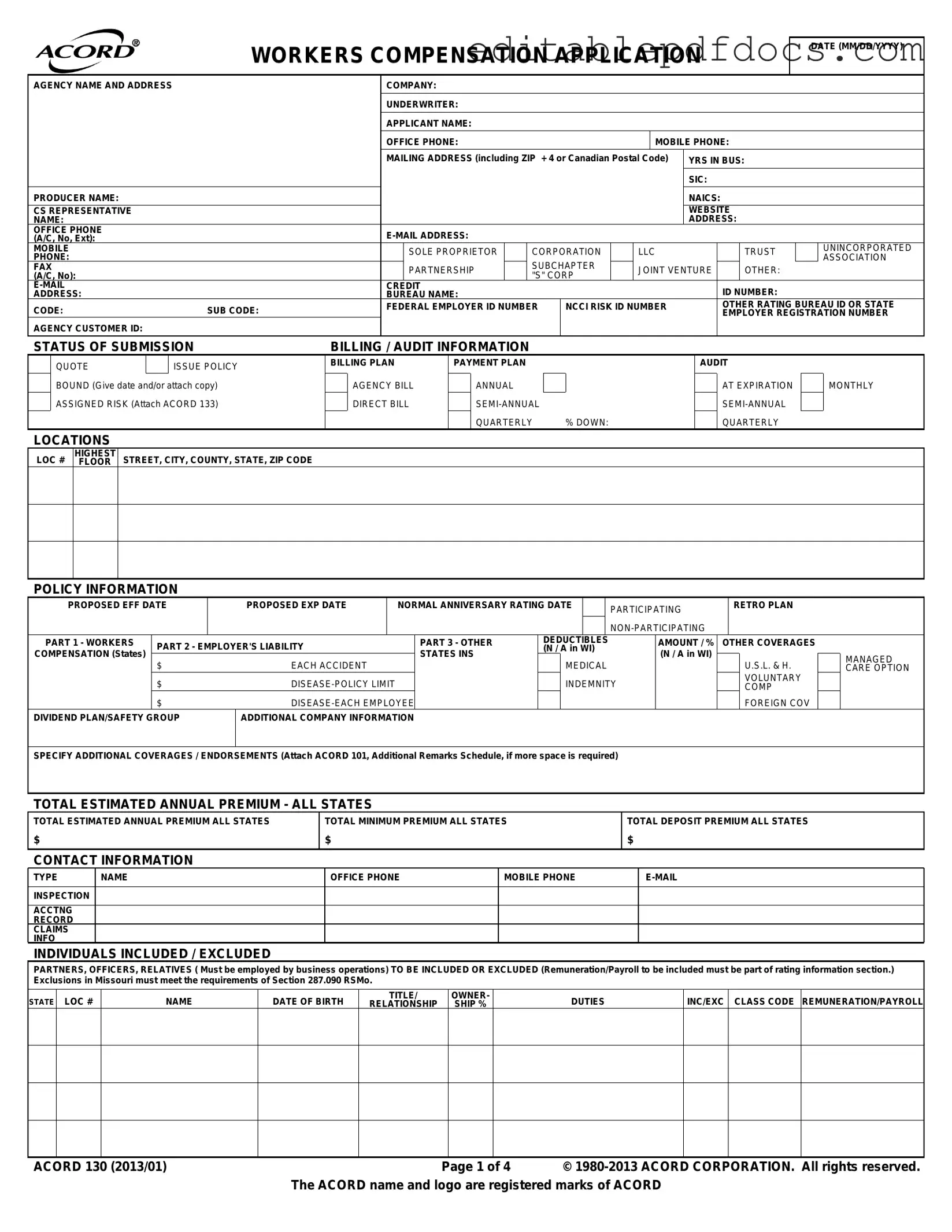Filling out the ACORD 130 form can be a daunting task, and mistakes can lead to delays or issues with your workers' compensation coverage. One common mistake is providing incomplete or inaccurate contact information. It's essential to ensure that all phone numbers, email addresses, and mailing addresses are correct. Missing or incorrect details can hinder communication with your insurance provider, causing unnecessary complications.
Another frequent error is neglecting to specify the nature of your business operations. The form requires a detailed description of what your business does, including the types of products or services offered. Failing to provide this information can result in misclassification, which may affect your premiums and coverage options. Be thorough and clear when describing your operations to avoid potential issues.
People often overlook the importance of accurately reporting employee information. This includes the number of employees, their classifications, and their estimated annual remuneration. Incorrect figures can lead to miscalculations in your premium, which could result in underinsurance or overpayment. Take the time to gather this information accurately to ensure that your coverage aligns with your actual business operations.
Additionally, some applicants forget to include all relevant exclusions and inclusions for employees. The form has specific sections to list individuals who are included or excluded from coverage, such as partners, officers, or relatives. Omitting this information can lead to gaps in coverage or unexpected liabilities. Be diligent in specifying who is covered under your policy.
Another mistake involves not reviewing the loss history and prior carrier information. This section requires you to provide details about any claims made in the past five years. Failing to disclose this information can raise red flags for insurers and may result in higher premiums or denial of coverage. Always be transparent about your claims history.
Lastly, some applicants rush through the signature section or forget to sign altogether. This final step is crucial as it confirms that the information provided is accurate and complete to the best of your knowledge. A missing signature can delay the processing of your application or even invalidate it. Always double-check that you have signed and dated the form before submission.
